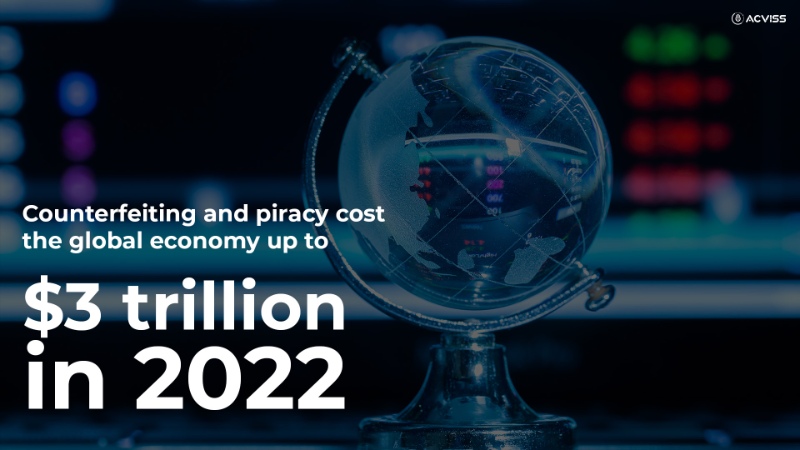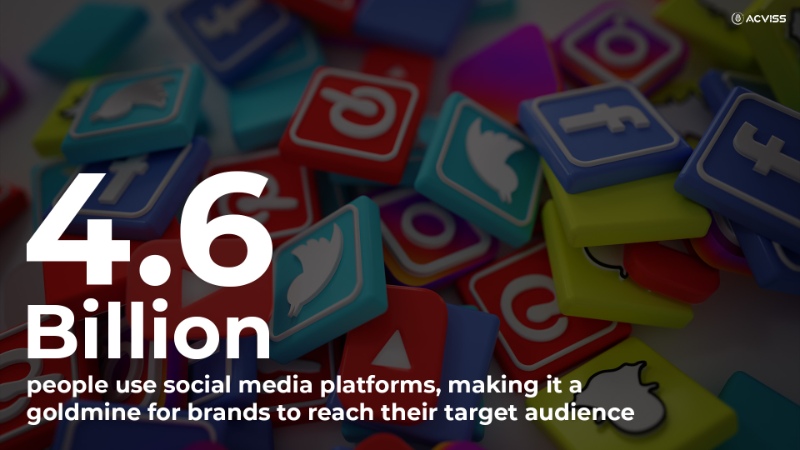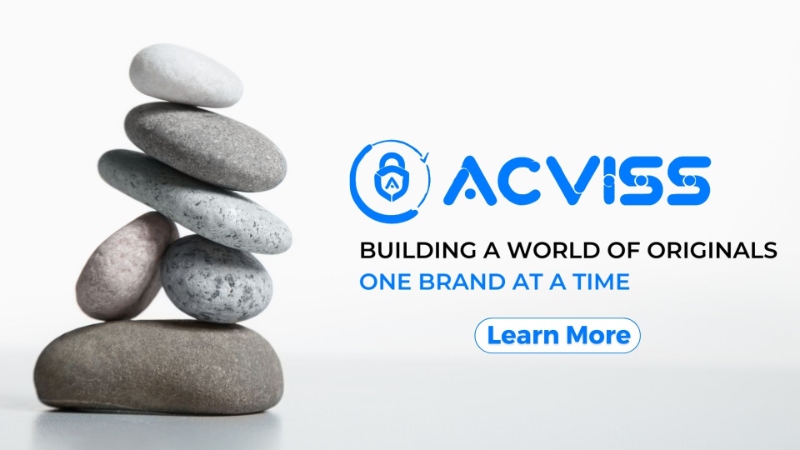Guide to Brand Protection in India's Digital Landscape
India’s transformation into a digital powerhouse has attracted illicit trades and scammers. With 25-30% of the goods sold in the country being fake, the beacon has been lit for brands to enhance their anti-counterfeiting measures and online brand protection practices.

India has witnessed an unprecedented surge in online commerce, driven by the growing adoption of e-commerce platforms, digital payment systems and the proliferation of smartphones. This transformation to digital India has not only increased opportunities but also presented a new set of challenges for the economy and brands – counterfeiting.
The battle between brand and counterfeiting is more critical than ever, with significant economic, social and safety implications, transcending the offline platforms to the digital world, giving utmost emphasis to ensuring brand protection in cyberspace as well.
Contents
- Digital Ecosystem and Expanding Footprint
- Why Brand Protection is a necessity in the digital age?
- The Extent of Counterfeiting
- What are the challenges of brand protection in the online realm?
- 1. Proliferation of E-commerce Platforms
- 2. Social Media Challenges
- 3. Regulatory Gaps
- 4. Domain Name Abuse
- Strategies for Effective Brand Protection
- 1. Digital Surveillance and Monitoring
- 2. Education and Awareness
- 3. Collaboration with E-commerce Platforms
- 4. Legal Measures
- A Collective Effort Towards a Common Goal
Digital Ecosystem and Expanding Footprint
With over 624 million internet users, India has become one of the largest online markets globally. The COVID-19 pandemic further accelerated the adoption of digital technologies for various activities; online shopping, remote work and e-learning. Similarly, the digital ecosystem's burgeoning presence in India has made brand protection more critical than ever.

Why Brand Protection is a necessity in the digital age?
Economic Impact
Brand protection is not merely a matter of safeguarding corporate interests; it has far-reaching economic implications. Counterfeiting and piracy cost the global economy up to $3 trillion in 2022. In India, the impact is significant, with counterfeit products eroding the revenues of legitimate businesses, leading to grave economic impact. A report by FICCI states that counterfeit products account for about 20-30% of the total goods sold in India, resulting in an annual loss of approximately ₹ 1 trillion to the economy.
Consumer Trust
Consumer trust fuels the brand's success. Counterfeit products can not only harm a brand's reputation but also pose risks to the health and safety of consumers. In cases of Counterfeit pharmaceuticals and consumer electronics, they need more quality control and safety standards than their legitimate counterparts. At least 27% of the consumers in India were unaware while purchasing a fake product. The erosion of consumer trust has a catastrophic effect on the overall economy and society.

The Extent of Counterfeiting
Nearly every industry despite its size or nature has been under the threat of counterfeiters both online and offline.
Counterfeit Pharmaceuticals
Counterfeit pharmaceuticals are a life-threatening issue. India is one of the world's largest producers of generic medicines, but it also grapples with the production and sale of counterfeit drugs. Annually the world saw incidents involving counterfeit drugs spike to 6,600 cases in 2022. India alone witnessed a 47% increase in the production of counterfeit drugs after the pandemic.
Consumer Electronics
The consumer electronics market is rife with counterfeit products, from fake mobile phones to counterfeit chargers and batteries. So much so that one in every 10 products in the market is suspected to be a fake. These pose not only a financial risk but also safety concerns due to subpar quality.
Apparel and Luxury Goods
Counterfeit clothing and luxury goods have a significant presence in India, particularly in the fashion and accessories sectors. It is estimated that at least 20% of the products advertised on social media marketplaces are counterfeits.
Food and Beverages
Even the food and beverage industry is not immune to counterfeiting. FMCG in India accounts for a whopping 28% of counterfeits in the country. Such substandard and adulterated food products pose health hazards to consumers and are a quick way to tarnish a brand's reputation.
What are the challenges of brand protection in the online realm?
1. Proliferation of E-commerce Platforms
The rise of e-commerce giants like Amazon, Flipkart and others has been a driving force behind India's economic transformation. In 2022, global e-commerce sales reached a staggering $4.5 trillion, reflecting an 18% increase from the previous year. However, these platforms, while enabling businesses to reach a wider audience, have also become hotspots for counterfeit products. Inadequate oversight and the sheer volume of sellers on these platforms make it challenging to police infringing listings effectively.

Counterfeiters attract consumers using low-price tags, who may believe they've stumbled upon a great deal. But these discounted products often turn out to be cheap knockoffs that not only compromise quality but may also pose safety risks.
Limited regulations and enforcement mechanisms create a fertile ground for illicit activities to thrive. As a result, genuine sellers face an uphill battle in protecting their brands and consumers from falling victim to counterfeit schemes.
2. Social Media Challenges
Social media platforms have emerged as powerful marketing tools for businesses in the digital World. An estimated 4.6 billion people use social media platforms, making it a goldmine for brands to reach their target audience. However, they are also exploited by counterfeiters and infringers to promote fake products. The viral nature of social media makes it difficult to control the spread of such content.

Scammers exploit social media by creating fake social media profiles or utilising fake social media influencers to endorse their products. People who blindly follow such fake influencers get scammed of their money and with no option to retain them.
Scammers create fake contests and giveaways in the name of legitimate brands, promising extravagant prizes aiming to collect user data and exploit their personal information.
Impersonation by mimicking the look and feel of genuine brand accounts, makes it challenging for users to distinguish between authenticity and deception.
3. Regulatory Gaps
India's legal framework for brand protection is in the process of evolving and it faces challenges in keeping pace with the rapidly changing digital landscape. Enforcement of intellectual property rights, particularly in the digital domain, remains a complex and time-consuming process.
The absence of robust border control mechanisms allows counterfeiters to flood the market with fake goods, evading scrutiny and detection and posing serious health and safety risks to unsuspecting consumers.
The lack of provisions to spread awareness among consumers about the existence and dangers of counterfeit products adds fuel to the fire.
4. Domain Name Abuse
India's digital growth has led to increased online presence for businesses. This has also resulted in a surge in domain name abuse, where fraudsters register domains that mimic legitimate brands to deceive consumers. This deceptive tactic can lead to phishing attacks and other cybercrimes.
One of the primary tactics employed by counterfeiters is Domain name spoofing. Subtle variations, misspellings or the addition of generic terms deceive users and redirect traffic away from genuine websites.
Strategies for Effective Brand Protection
1. Digital Surveillance and Monitoring
Brands need to employ advanced anti-counterfeiting and monitoring tools. These technologies help identify instances of IP infringement across various online platforms, enabling swift action against counterfeiters.
But it may turn out to be a manual and tedious task to take up alone.
Exactly why you should look into a solution that can scan across the internet and even the dark web to find your IP infringements. Truviss by Acviss leverages Artificial Intelligence and Machine learning techniques to deep dive into the world of the web to thoroughly review and identify any fake product listings, ads, posts, offers or domain names that can harm your brand authenticity. The plus side, preventing the threat even before it happens, in a matter of minutes and without breaking a sweat.
2. Education and Awareness
Educating consumers about the risks associated with counterfeit products is a crucial aspect of brand protection. Brands can engage in awareness campaigns to help consumers differentiate between genuine and fake products, thus reducing the demand for counterfeits. Take up your social media presence and utilise the customer base to spread the word about your brand's initiative to prevent counterfeits. Teach them the ill effects of counterfeits and how to avoid them like the plague.
3. Collaboration with E-commerce Platforms
Brands should establish strong partnerships with e-commerce platforms to ensure better control over the sale of their products. Many platforms have implemented anti-counterfeiting measures, such as brand registration programs and algorithms that detect fraudulent listings.
Amazon’s Transparency program allows brands to integrate Amazon-provided labels for authenticating the product by the consumers. The downside - the program is not compatible with other online marketplaces. Whereas product authentication solution like Certify allows you to use AI-enabled patented proprietary labels on your products with omnichannel support, enhancing customer trust and product traceability.
4. Legal Measures
A regulatory gap exists, but taking legal action against counterfeiters is a vital component of brand protection. Companies should initiate civil or criminal proceedings against infringing parties. Stronger intellectual property rights enforcement and the streamlining of legal processes are a necessity. Register your brand's trademark rights on foreign grounds as well. This can help a lot when it comes to selling overseas as they will be protected by the laws.
You can read on - How to cultivate a strong brand protection culture in your organisation?
A Collective Effort Towards a Common Goal
The changing supply chain landscapes across the world are not much different from India. The expansion of online marketplaces and their wide acceptance is causing an even bigger threat than ever before. brands, government bodies and consumers must collaborate to mitigate the risks of counterfeiting and brand abuse. Enhanced regulation, effective monitoring and increased awareness are critical components of this effort. Safeguarding brands and consumer trust should stand as a priority to ensure that Digital India continues to flourish as a secure and vibrant digital marketplace.
If you desire to be the brand that wants to make a change, remember to get in touch with us. We are here to create a world that is safe for brands to grow. Acviss has protected over 2 billion products globally and we assure you that your brand’s safety is our priority.
